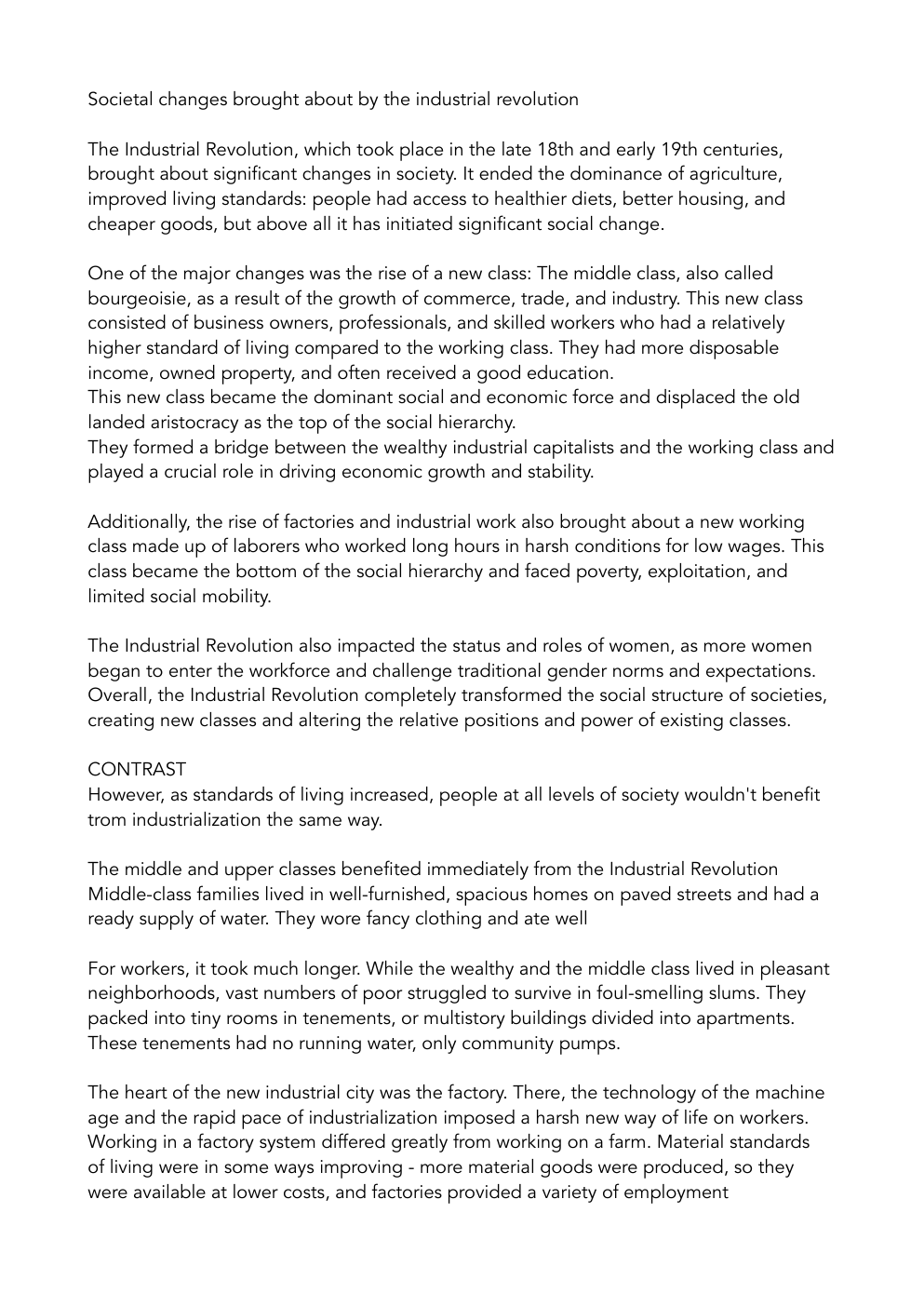The industrial revolution
Publié le 12/05/2024
Extrait du document
«
Societal changes brought about by the industrial revolution
The Industrial Revolution, which took place in the late 18th and early 19th centuries,
brought about significant changes in society.
It ended the dominance of agriculture,
improved living standards: people had access to healthier diets, better housing, and
cheaper goods, but above all it has initiated significant social change.
One of the major changes was the rise of a new class: The middle class, also called
bourgeoisie, as a result of the growth of commerce, trade, and industry.
This new class
consisted of business owners, professionals, and skilled workers who had a relatively
higher standard of living compared to the working class.
They had more disposable
income, owned property, and often received a good education.
This new class became the dominant social and economic force and displaced the old
landed aristocracy as the top of the social hierarchy.
They formed a bridge between the wealthy industrial capitalists and the working class and
played a crucial role in driving economic growth and stability.
Additionally, the rise of factories and industrial work also brought about a new working
class made up of laborers who worked long hours in harsh conditions for low wages.
This
class became the bottom of the social hierarchy and faced poverty, exploitation, and
limited social mobility.
The Industrial Revolution also impacted the status and roles of women, as more women
began to enter the workforce and challenge traditional gender norms and expectations.
Overall, the Industrial Revolution completely transformed the social structure of societies,
creating new classes and altering the relative positions and power of existing classes.
CONTRAST
However, as standards of living increased, people at all levels of society wouldn't benefit
trom industrialization the same way.
The middle and upper classes benefited immediately from the Industrial Revolution
Middle-class families lived in well-furnished, spacious homes on paved streets and had a
ready supply of water.
They wore fancy clothing and ate well
For workers, it took much longer.
While the wealthy and the middle class lived in pleasant
neighborhoods, vast numbers of poor struggled to survive in foul-smelling slums.
They
packed into tiny rooms in tenements, or multistory buildings divided into apartments.
These tenements had no running water, only community pumps.
The heart....
»
↓↓↓ APERÇU DU DOCUMENT ↓↓↓
Liens utiles
- In 1989, the Rumanian revolution ended in the execution of the Head ofState and of the Party, Nicolas Ceausescu.
- It was with the "velvet revolution" of 1989 that Czechoslovakia put anend to the communist regime but the writer Vaclav Havel became Head ofState and was then unable to withstand nationalist tensions.
- Hanif Kureishi - The Buddha of Suburbia
- does the end justifies the means
- the handmaid's tale: How far do you agree that Margaret Atwood makes resistance central to THT?


